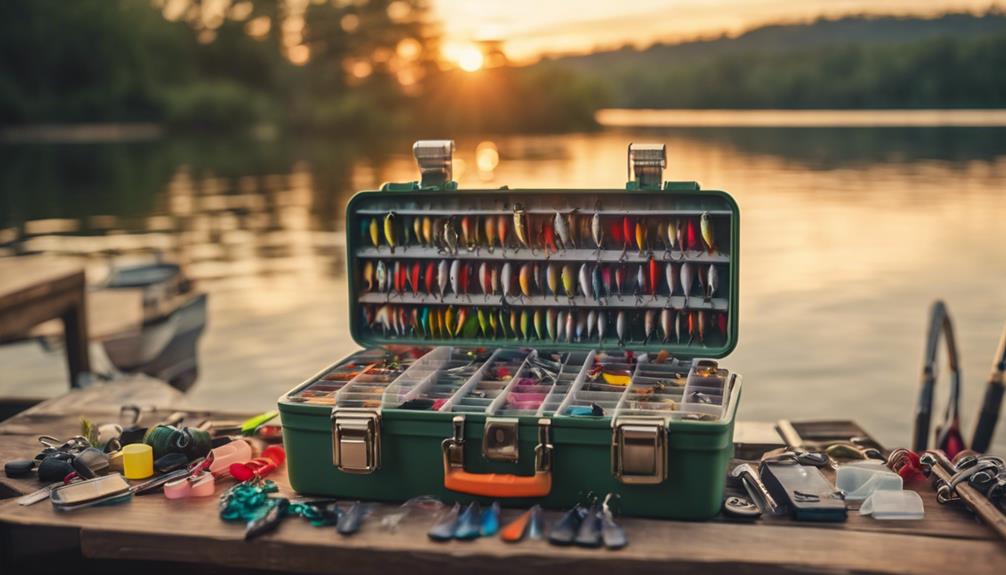Understanding Fly Fishing Bait: What You Need to Know
Fly fishing bait is an essential component for any angler looking to catch fish using this unique method. Unlike traditional fishing that often relies on live bait or heavy lures, fly fishing uses lightweight artificial flies that mimic the appearance and movement of insects, small fish, or other aquatic creatures. The primary goal of using fly fishing bait is to attract fish by imitating their natural food sources. This article will delve into the various aspects of fly fishing bait, helping you understand its importance and how to choose the right type for your fishing adventures.
The Different Types of Fly Fishing Bait
When it comes to fly fishing bait, there are two main categories: dry flies and wet flies. Dry flies float on the surface of the water, imitating insects like mayflies or grasshoppers, while wet flies sink below the surface, resembling larvae or minnows. Other variations include streamers and nymphs, which can also be effective depending on the specific fishing conditions. Understanding the differences between these types of fly fishing bait will significantly increase your chances of success on the water.
Choosing the Right Fly Fishing Bait for Your Target Species
Selecting the appropriate fly fishing bait is crucial for targeting specific fish species. For instance, if you’re angling for trout, using a small dry fly that imitates a mayfly can yield better results. Conversely, if you’re targeting bass, larger streamers or poppers may be more effective. Researching the feeding habits and preferred bait of your target species can help you make informed decisions when selecting your fly fishing bait. Remember, local fishing reports and advice from experienced anglers can also provide valuable insights into what works best in your area.
Seasonal Considerations for Fly Fishing Bait
The effectiveness of your fly fishing bait can vary significantly depending on the season. During spring and summer, aquatic insects are abundant, making dry flies more effective. As temperatures drop in autumn, fish often move to deeper waters, and using nymphs or streamers can be more successful. Understanding these seasonal patterns and adjusting your bait accordingly can greatly enhance your fly fishing experience. Additionally, being aware of local hatches—when specific insects emerge—can help you choose the right bait to match the current conditions.
Match the Hatch: The Art of Imitation in Fly Fishing Bait
“Match the hatch” is a term commonly used among fly anglers that refers to the practice of selecting fly fishing bait that closely resembles the current food sources available to fish. This technique requires a keen observation of the water and understanding of the local aquatic ecosystem. By mimicking the size, shape, and color of the insects or other prey in the water, you can significantly improve your chances of enticing fish to strike. Carrying a variety of fly fishing bait in different patterns and sizes can help you adapt to changing conditions on the water.
DIY Fly Fishing Bait: Crafting Your Own Flies
For those who are adventurous and enjoy hands-on activities, crafting your own fly fishing bait can be a rewarding experience. DIY fly tying allows you to create custom flies tailored to your local fishing environment. Additionally, making your own flies can be more cost-effective than purchasing them at retail stores. There are countless resources available online, including video tutorials and step-by-step guides, to help you get started with fly tying. As you gain experience, you’ll develop a better understanding of which materials and techniques work best for your fishing style.
Essential Accessories for Using Fly Fishing Bait
To effectively use fly fishing bait, you’ll need some essential accessories. A quality fly rod and reel combo are crucial for casting lightweight flies. Additionally, a selection of fly boxes to store your bait is essential for organization and accessibility. A good pair of polarized sunglasses can help you see into the water better, allowing you to spot fish and observe their behavior. Lastly, investing in waders can enhance your experience by giving you access to deeper waters where fish are more plentiful. Having the right gear can make all the difference in your fly fishing adventures.
Best Practices for Storing and Maintaining Fly Fishing Bait
Proper storage and maintenance of your fly fishing bait can prolong its lifespan and effectiveness. Keeping your flies organized in waterproof fly boxes can prevent damage and make them easier to transport. After each fishing trip, inspect your flies for any wear and tear, and replace any that show significant signs of damage. Additionally, storing your flies in a cool, dry place will help maintain their shape and color. By taking good care of your fly fishing bait, you can ensure that you’re always ready for your next fishing trip.
Conclusion: Elevate Your Fly Fishing Experience with the Right Bait
In conclusion, understanding the various types of fly fishing bait, knowing how to choose the right one for your target species, and mastering the art of imitation are key components to successful fly fishing. Whether you decide to purchase ready-made flies or craft your own, being knowledgeable about seasonal patterns and local hatches will greatly enhance your fishing experience. By following best practices for storage and maintenance, you can ensure that your fly fishing bait remains effective for years to come. Embrace the adventure of fly fishing, and let your bait do the talking on the water!
